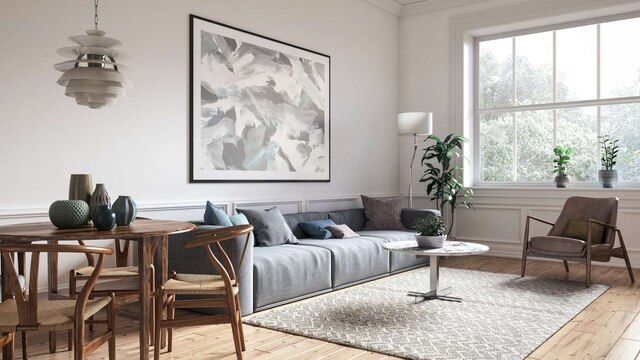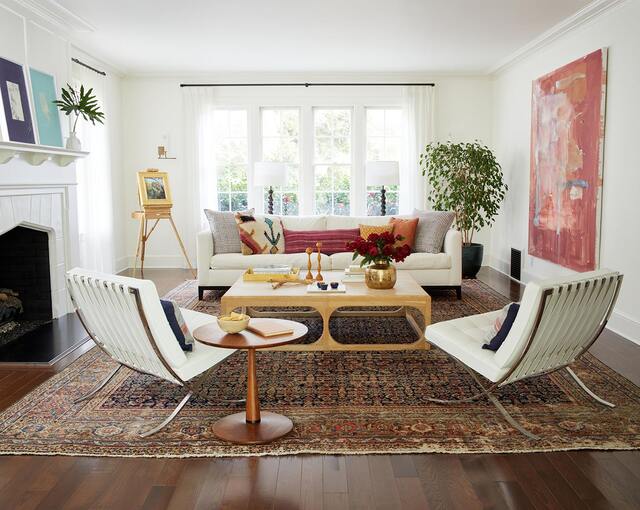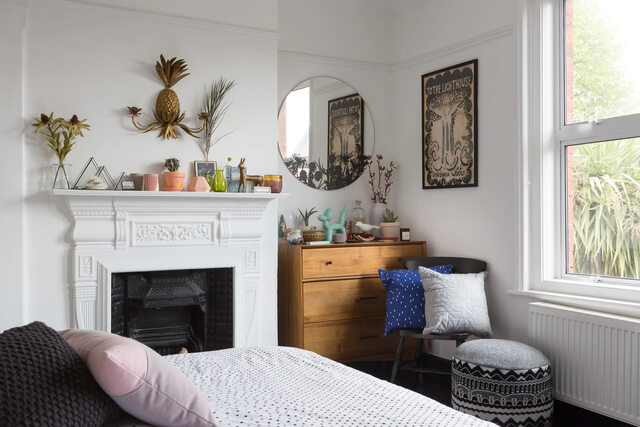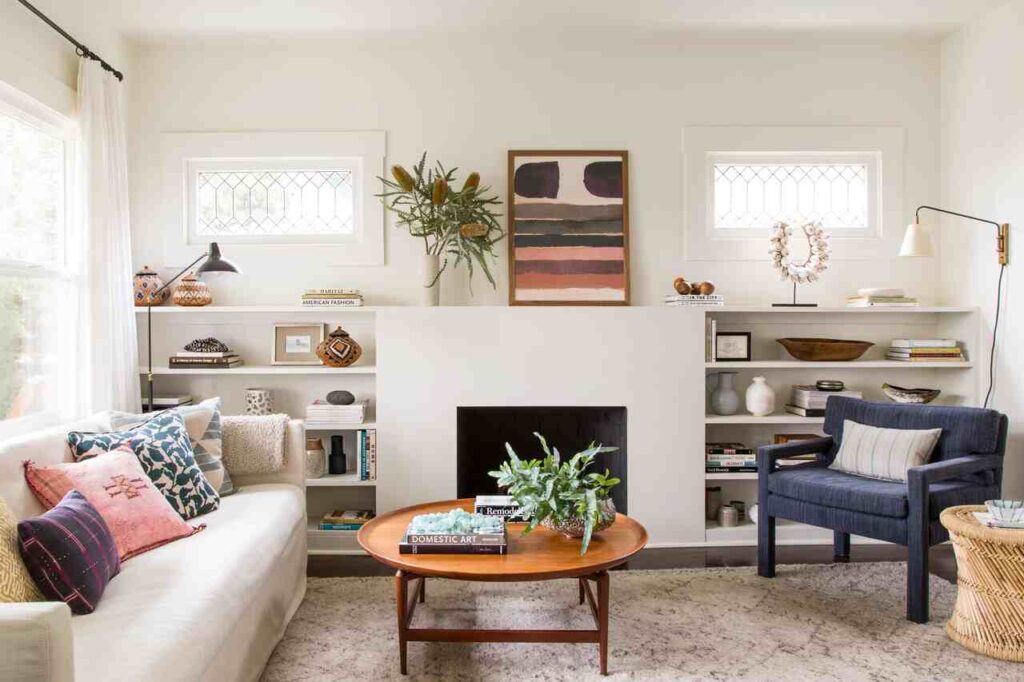To maximize space without compromising comfort or design in a tiny living room, furniture arrangement calls both careful planning and inventive ideas. Making a small area both aesthetically pleasing and useful can seem difficult, but it’s quite doable with the correct strategy. This thorough book seeks to simplify the process by offering you complete strategies and useful advice meant to enable you to maximize your living space. Whether your house has a little flat or a cozy nook, the secret is to recognize the special qualities of your area and use design ideas to improve it.
From picking the correct furniture and organizing it properly to including storage solutions and choosing color schemes that give an appearance of space, we will discuss many facets of tiny living room design throughout this book. You will learn how to strike a mix between appearance and utility so that your living space not only looks fantastic but also satisfies your daily demands. Following these professional suggestions will help you to turn even the smallest of living rooms into a cozy, fashionable refuge where you can unwind, entertain, and fully enjoy life.
This book is meant to give you practical ideas and inspiration whether your present setup needs improvement or you’re beginning from nothing. Careful design combined with some imagination will help you to design a living room that seems open, inviting, and ideally fit for your way of life. So let’s explore the secrets to maximize your small living room design, so transforming obstacles into chances for designing a lovely and functional environment.
Understanding the Layout and Dimensions of Your Small Living Room
Spend some time looking over the layout and measurements of your living space before starting furniture placement. Calculate the available space including wall width, window and door measurements. Think of any architectural details such as built-in shelving or alcoves that can affect furniture arrangement. Making a floor plan will provide you a visual direction to enable proper layout design.
Essential is knowledge of the “small living room layout” and “room dimensions”. These ideas will help you to make wise furniture placement decisions and maximize the given space.
Choosing the Right Furniture

Every piece of furniture in a small living room should have a function and suit the area proportionately. Choose furniture proportioned correctly for the size of the room. Think about space-saving choices such modular furniture that can be changed as needed, armless chairs, and sofas sized for an apartment. Multi-functional items like coffee tables with built-in storage or storage ottomans can help best maximize space economy.
Knowing “small space furniture,” “apartment-sized sofas,” “armless chairs,” “modular furniture,” and “multipurpose furniture” will help you choose items that accentuate your small living room layout and improve use.
Optimizing Furniture Arrangement for Flow and Functionality

A balanced and comfortable living area depends on furniture placed with purpose. Start by determining the room’s focal point whether it is a fireplace, TV, or large window. Set chairs around this center to form a comfortable talking space. To generate openness, think about floating furniture away from walls; anchor furniture groups with area rugs.
Knowing about “focal point,” “seating arrangement,” “conversation area,” “floating furniture,” and “area rugs,” will help you arrange furniture in a way that maximizes space and improves the room’s utility and beauty..
Defining Areas for Different Functions

Creating separate areas in small living rooms might help to enhance space economy and organization. Specify places for relaxing, eating (if relevant), and maybe a reading corner or workstation. Visually distinguish these areas with furniture placement, rugs, and other accents while yet keeping a general unified style.
Knowing “living room zones,” “dining area,” “workspace,” “reading nook,” and “visual separation” will help you design a multifunctional space that satisfies all of your living needs without feeling crowded.
Maximizing Storage and Display Options

Look to vertical space for extra storage and display possibilities when floor space is restricted. To keep mess off the floor, install floating or wall-mounted shelves. Think of tall bookcases or cabinets that point the eye upward to create an appearance of height and optimize storage capacity. Add charm without overpowering the area with ornamental accents like plants or artwork.
Knowing “vertical space,” “wall-mounted shelves,” “floating shelves,” “tall bookcases,” “storage solutions,” and “decorative elements” will enable you to use every inch of space at hand and improve the visual attractiveness of the room.
Enhancing Ambiance and Visual Appeal
Look to vertical space for extra storage and display possibilities when floor space is restricted. To keep mess off the floor, install floating or wall-mounted shelves. Think of tall bookcases or cabinets that point the eye upward to create an appearance of height and optimize storage capacity. Add charm without overpowering the area with ornamental accents like plants or artwork.
Knowing “vertical space,” “wall-mounted shelves,” “floating shelves,” “tall bookcases,” “storage solutions,” and “decorative elements” will enable you to use every inch of space at hand and improve the visual attractiveness of the room.
Practical Tips for Small Space Living – Making the Most Out of Every Corner
Finally, here are some practical tips to help you maximize your small living room space:
- Opt for Light Colors: Light-colored walls and furniture can make a room feel larger and more airy.
- Mirrors: Use mirrors to reflect light and create the illusion of space.
- Dual-Purpose Furniture: Choose furniture that serves multiple functions, such as a sofa bed or a storage ottoman.
- Keep it Clutter-Free: Regularly declutter to maintain an organized and spacious feel.
- Flexible Arrangements: Experiment with different furniture layouts until you find the one that works best for your lifestyle and needs.
These ideas which include “light-colored walls,” “mirrors,” “dual-purpose furniture,” “decluttering,” and “flexible arrangements” offer doable ways to improve the use and visual attractiveness of your small living space.
Conclusion
Setting furniture in a tiny living room cal0ls for careful thought of space, function, and aesthetics in order to strike a mix of art and science. Applying the ideas and advice in this book can help you turn your little living area into a chic and useful refuge. Remember to evaluate your area, buy correctly scaled furniture, arrange items for flow and use, and make use of vertical space for storage and exhibition. These ideas will help you design a little living room that seems roomy, friendly, and exactly fit for your way of life.

